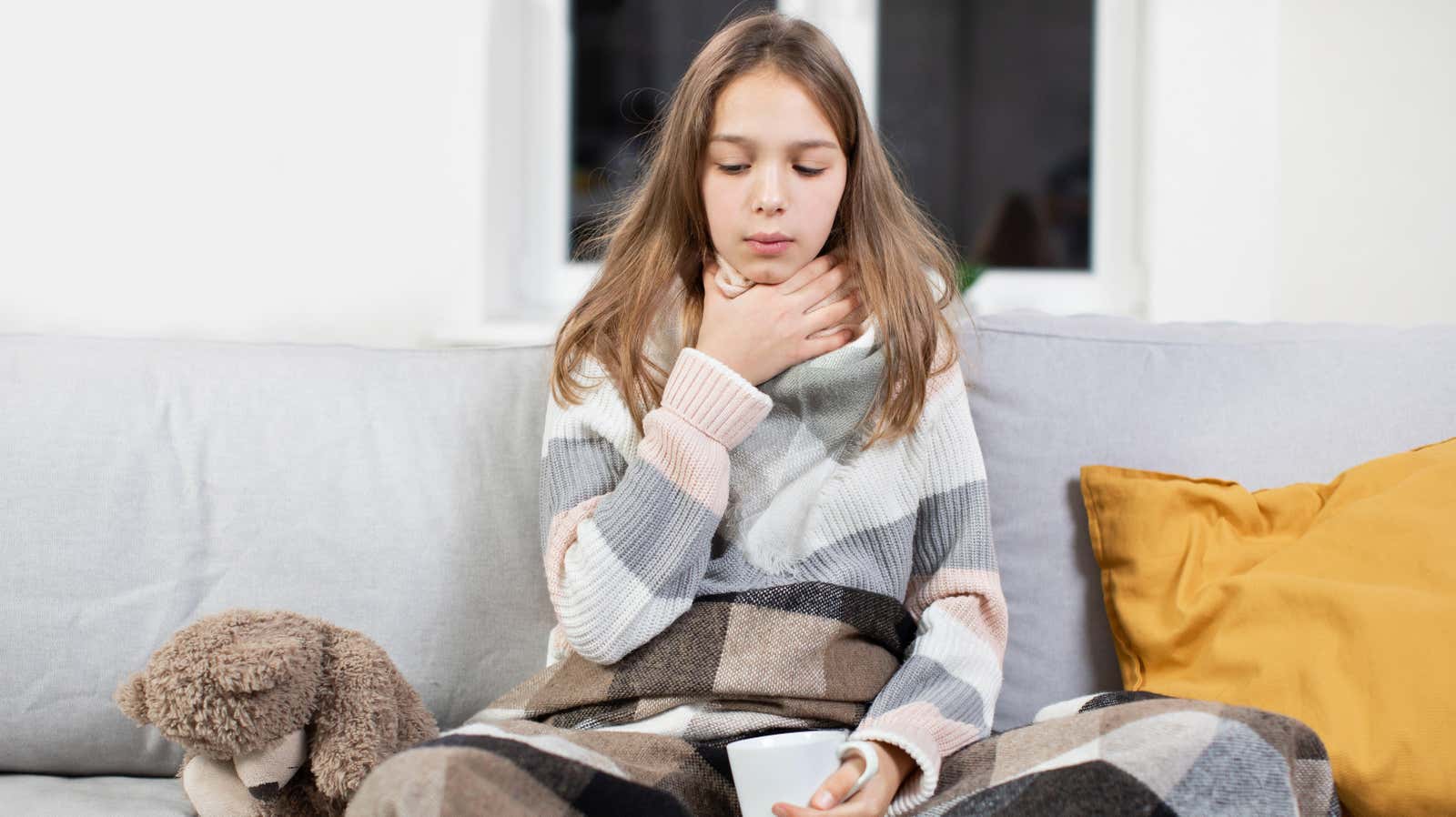How to Know If Your Child Has Mononucleosis

Mono is a disease that most often affects teenagers and young adults, the main symptoms of which are excessive fatigue and ridicule because of who you kissed. But anyone can get sick with it, and you should know the rest of the symptoms.
What causes mono?
Infectious mononucleosis is usually caused by the Epstein-Barr virus (EBV), although sometimes the same set of symptoms can be caused by other infections. The virus infects white blood cells, and the name “mono” refers to how some infected white blood cells look under a microscope.
Kissing may be the best known way to transmit the virus, but EBV can also be spread when people share food or utensils, or otherwise come into contact with each other’s saliva or other bodily fluids.
Mono has an incubation period of several weeks, so people only show symptoms a few weeks after being infected with the virus.
Who gets mono?
Symptomatic mono is most common in teenagers and young adults between the ages of 15 and 24 or so.
But it is also common to have mononucleosis and never show any symptoms. This is especially true for young children. By some estimates, 50% of the US population is infected with EBV by age 5, and in many cases there are no symptoms or it is a mild illness that goes along with all the common coughs and colds.
You can also get it later in life if you’re just (un)lucky that you’ve never picked it up before. I contracted mononucleosis when I was 30, and I’m pretty sure I contracted it while sharing food or utensils with one of my kids, who in turn probably picked it up from some drooling toddler in preschool.
What are the symptoms of mono?
Swollen lymph nodes are often one of the early symptoms of mono, along with a sore throat, fever, and fatigue. The list of symptoms often includes a “malaise” that is difficult to describe, but I felt it as a kind of vague dizziness during the day, which alternated with a fever at night.
Mono can affect the liver and spleen, causing pain, a feeling of fullness, or bloating. Sometimes liver damage can cause jaundice with yellowing of the skin and eyes.
There is a blood test for mono, but it can be negative in the early stages of infection. If your child has the symptoms described above, get it checked out to see if it’s a mono or other illness (after all, more than one illness can cause fever and fatigue).
There is no cure for mono, so in most cases your child will simply be told to rest and wait it out. If there is swelling of the spleen, they will likely be advised to avoid activities such as contact sports for several weeks; rupture of the spleen is rare but can be fatal. Their doctor may also want to see them for a follow-up visit to make sure they have recovered properly.